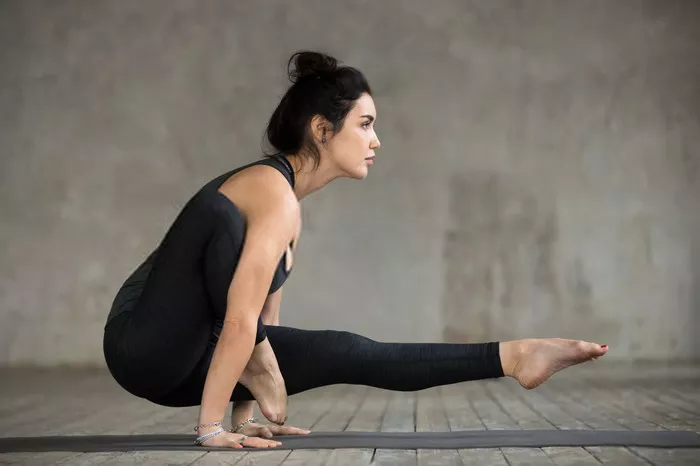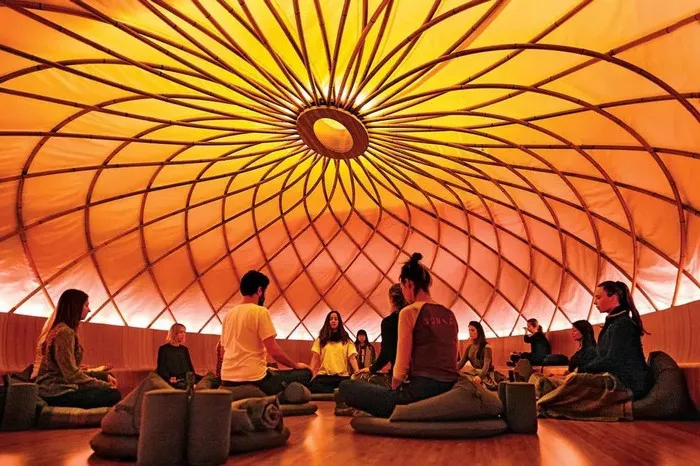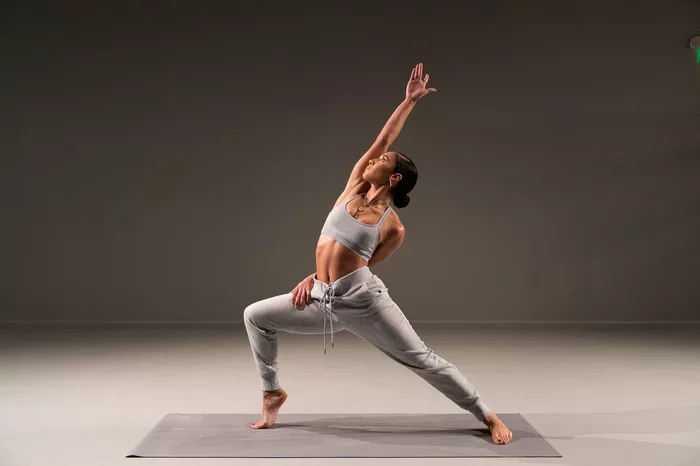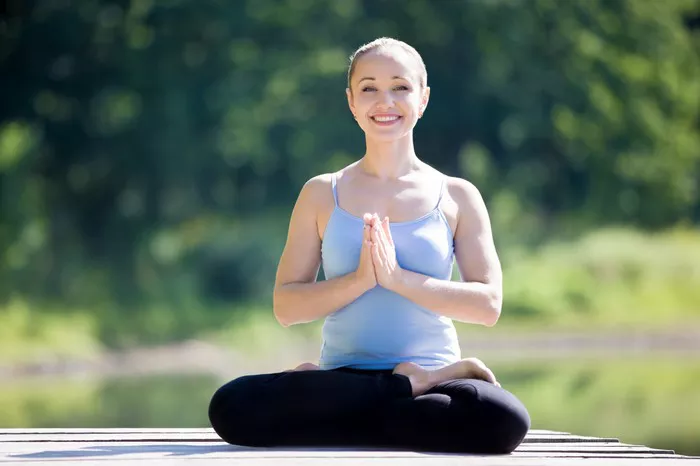Yoga meditation is a profound practice that integrates the mind, body, and soul. Whether you’re a seasoned practitioner or a beginner, doing yoga meditation at home can offer numerous physical, mental, and spiritual benefits. With the right environment, mindset, and guidance, you can create a tranquil practice space in the comfort of your own home and experience the peace and relaxation that yoga meditation can bring.
This article will explore how to do yoga meditation at home effectively, providing a step-by-step guide, tips, and techniques to help you establish a rewarding practice. We will also discuss the types of yoga meditation, the physical and mental benefits of meditation, and how to stay motivated as you embark on this transformative journey.
Understanding Yoga Meditation
Yoga meditation is a form of mindful practice that involves combining physical postures, breathing exercises, and mental focus to promote relaxation, clarity, and inner peace. While yoga is often associated with physical postures (asanas), meditation is an equally important aspect of yoga practice that focuses on stillness and mental clarity.
Yoga meditation helps calm the nervous system, reduce stress, increase mindfulness, and enhance emotional stability. When practiced regularly, it can lead to a deeper connection with oneself and foster a sense of peace and serenity that extends beyond the mat.
The Benefits of Yoga Meditation
Before diving into the practice of yoga meditation, it’s important to understand why it’s so beneficial for your overall health and well-being:
Mental Clarity and Focus: Meditation enhances your ability to focus and helps clear your mind of unnecessary thoughts. By learning to concentrate on your breath or a specific mantra, you improve your mental clarity and focus.
Reduced Stress and Anxiety: Regular meditation helps reduce the levels of stress hormones (like cortisol) in the body. It allows you to shift from the “fight or flight” response to a relaxed, calm state.
Improved Emotional Well-being: Yoga meditation helps regulate emotions by cultivating mindfulness and self-awareness. Over time, this practice can lead to better emotional stability, fewer mood swings, and a greater sense of contentment.
Better Physical Health: While meditation itself doesn’t involve physical movement, it works in conjunction with yoga asanas (poses) to promote better physical health. It can help reduce muscle tension, lower blood pressure, and enhance overall relaxation.
Deep Connection with the Self: One of the most transformative aspects of yoga meditation is its ability to foster a deep connection with your inner self. This connection can help you live a more intentional, conscious life.
Increased Mindfulness: Yoga meditation encourages you to be present in the moment. It enhances mindfulness and helps you develop a greater awareness of your thoughts, emotions, and physical sensations.
Preparing Your Space for Yoga Meditation
To practice yoga meditation at home, creating an environment conducive to relaxation and concentration is crucial. A cluttered or noisy space can make it difficult to meditate effectively. Follow these simple tips to create an ideal space for your practice:
Choose a Quiet Spot: Select a quiet corner or room in your home where you won’t be disturbed. It should be a space where you can sit or lie down comfortably without interruptions.
Declutter the Area: Clear the space of distractions such as electronics, work materials, or clutter. The cleaner the space, the easier it is to calm your mind.
Create Ambiance: Consider adding candles, incense, or essential oils to your meditation area. Aromatherapy can enhance relaxation and promote a soothing atmosphere. Soft, ambient music can also help set the tone.
Use a Yoga Mat or Cushion: Depending on your preferred sitting posture, use a yoga mat, cushion, or blanket to make yourself comfortable. If you plan to sit for long periods, a cushion can help maintain proper posture and reduce discomfort.
Adjust Lighting: Soft, dim lighting is ideal for meditation. Natural light is a good option, but you can also use lamps or candles to create a calming atmosphere.
Personalize the Space: Add personal touches that help you feel connected to the space. This might include a small altar with meaningful objects, spiritual symbols, or anything that inspires peace and tranquility.
Step-by-Step Guide to Yoga Meditation at Home
Once you have prepared your space, you are ready to begin your yoga meditation practice. Here’s a simple, step-by-step guide that can help you meditate effectively at home.
Step 1: Set Your Intention
Before you begin your practice, take a few moments to set your intention. This could be a goal for your practice, such as cultivating patience, reducing stress, or enhancing focus. Setting an intention helps to ground your practice and provides direction for your meditation.
Step 2: Find a Comfortable Seat
Choose a seated position that feels comfortable for you. You can sit cross-legged on the floor, on a cushion, or on a chair. The key is to keep your spine straight and your body relaxed.
If sitting on the floor, you can also use props like blocks or blankets to elevate your hips, which may help with posture and reduce strain.
Step 3: Focus on Your Breath
In yoga meditation, breathing is central. Begin by closing your eyes gently and bringing your awareness to your breath. Take slow, deep breaths in through your nose and exhale through your mouth. Aim for deep, diaphragmatic breathing, where your belly rises and falls with each breath.
As you inhale, imagine filling your body with calm and positive energy. As you exhale, release any tension, stress, or negative thoughts. Breathe naturally and try to focus all your attention on the sensation of your breath moving in and out.
Step 4: Bring Your Awareness to the Present Moment
Yoga meditation is about being present. As you continue breathing deeply, notice the sensations in your body. Are there any areas of tension or discomfort? Gently bring your awareness to these areas without judgment. Just observe.
If your mind starts to wander, gently bring your attention back to your breath or the present moment. It’s normal for thoughts to arise during meditation, but the goal is not to suppress them; rather, acknowledge them without attachment and return your focus to your breath.
Step 5: Incorporate Mantras or Affirmations (Optional)
Incorporating a mantra or affirmation into your meditation practice can deepen your concentration. A mantra is a word or phrase that you repeat silently to yourself. It could be a Sanskrit word like “Om” or a personal affirmation like “I am at peace.”
Repeat your mantra with each inhale and exhale. Let the vibration of the words soothe your mind and enhance your sense of calm.
Step 6: Observe Your Thoughts and Emotions
As you continue your meditation, take time to observe the thoughts and emotions that arise. Meditation is a process of self-awareness, and by noticing your internal state without judgment, you can gain insight into your mental and emotional patterns.
If you find yourself becoming distracted or frustrated, return to your breath or mantra. Meditation is not about perfection; it’s about creating space for stillness and observation.
Step 7: Slowly End Your Practice
After about 15-20 minutes, slowly begin to bring your practice to an end. Gently deepen your breath and gradually bring your awareness back to the room. You can slowly open your eyes and stretch your body to release any tension that may have accumulated during the practice.
Take a moment to reflect on how you feel after meditation. Notice any changes in your mood, mental clarity, or physical state. Acknowledge the positive effects of the practice and thank yourself for the time you dedicated to your well-being.
Yoga Meditation Techniques to Try at Home
There are various styles and techniques of yoga meditation that you can explore. Here are some popular methods you can incorporate into your practice:
Mindfulness Meditation: This technique involves paying attention to your thoughts, feelings, and sensations in the present moment. It’s a great way to develop awareness and reduce stress.
Mantra Meditation: By repeating a mantra or phrase, you can enhance focus and concentration. Popular mantras include “Om,” “So Hum,” and “I am at peace.”
Guided Meditation: You can listen to a recorded meditation session led by an instructor. This can be helpful for beginners who need guidance through the meditation process.
Loving-Kindness Meditation: This practice focuses on cultivating compassion and kindness toward oneself and others. It involves silently repeating phrases of goodwill such as “May I be happy” or “May you be at peace.”
Yoga Nidra: Often referred to as “yogic sleep,” yoga nidra is a state of conscious relaxation. It involves lying down in a comfortable position and being guided into a deep state of relaxation.
Breath Awareness Meditation: This practice focuses solely on the breath. By observing the natural rhythm of your breath, you can cultivate deep relaxation and focus.
Common Challenges and How to Overcome Them
Practicing yoga meditation at home can be incredibly rewarding, but it’s not without its challenges. Here are some common obstacles and strategies for overcoming them:
Difficulty Staying Focused: It’s common for your mind to wander during meditation. If this happens, simply return your focus to your breath, mantra, or body sensations. The goal is to gently guide your attention back to the present moment without judgment.
Physical Discomfort: Sitting for long periods can cause discomfort, especially if you’re new to meditation. Use props like cushions or blankets to support your body and help maintain a comfortable posture. You can also try lying down if sitting is too challenging.
Time Constraints: It’s easy to get busy and skip meditation sessions. Start with shorter practice sessions, such as 5-10 minutes, and gradually build up to longer sessions as it becomes a regular part of your routine.
Frustration with Progress: Meditation is a gradual process, and it’s normal not to feel immediate results. Be patient and compassionate with yourself. The benefits of meditation accumulate over time, so consistency is key.
Conclusion
Yoga meditation is a powerful tool for achieving mental, emotional, and physical balance. By creating a dedicated space for your practice, setting an intention, and focusing on your breath, you can experience the transformative benefits of meditation in your own home. Whether you practice for 10 minutes or an hour, the key is to make meditation a consistent part of your life. Remember that meditation is a journey, not a destination, and with time, you’ll deepen your connection to yourself and cultivate greater peace and mindfulness.
Related Topics:

























